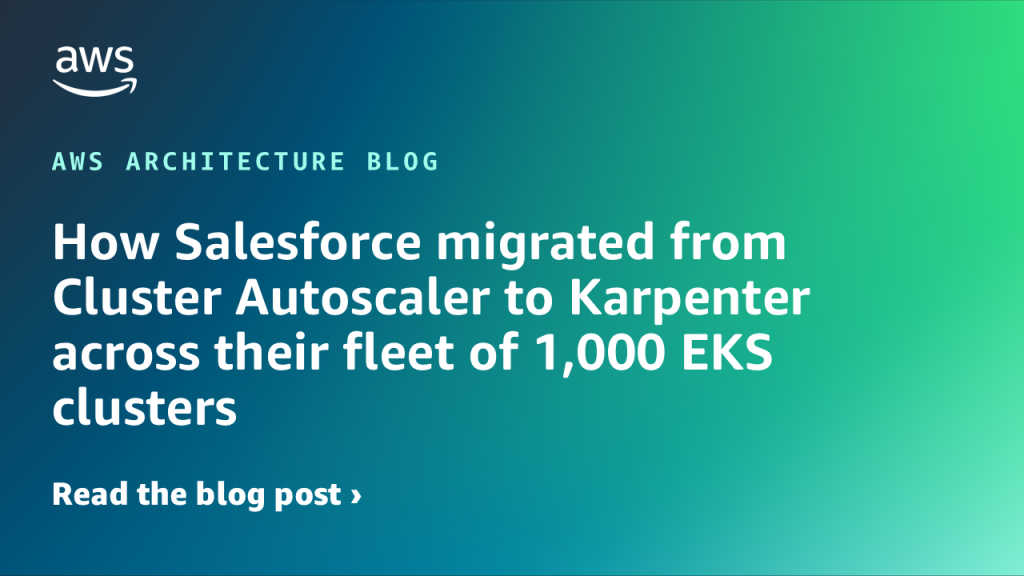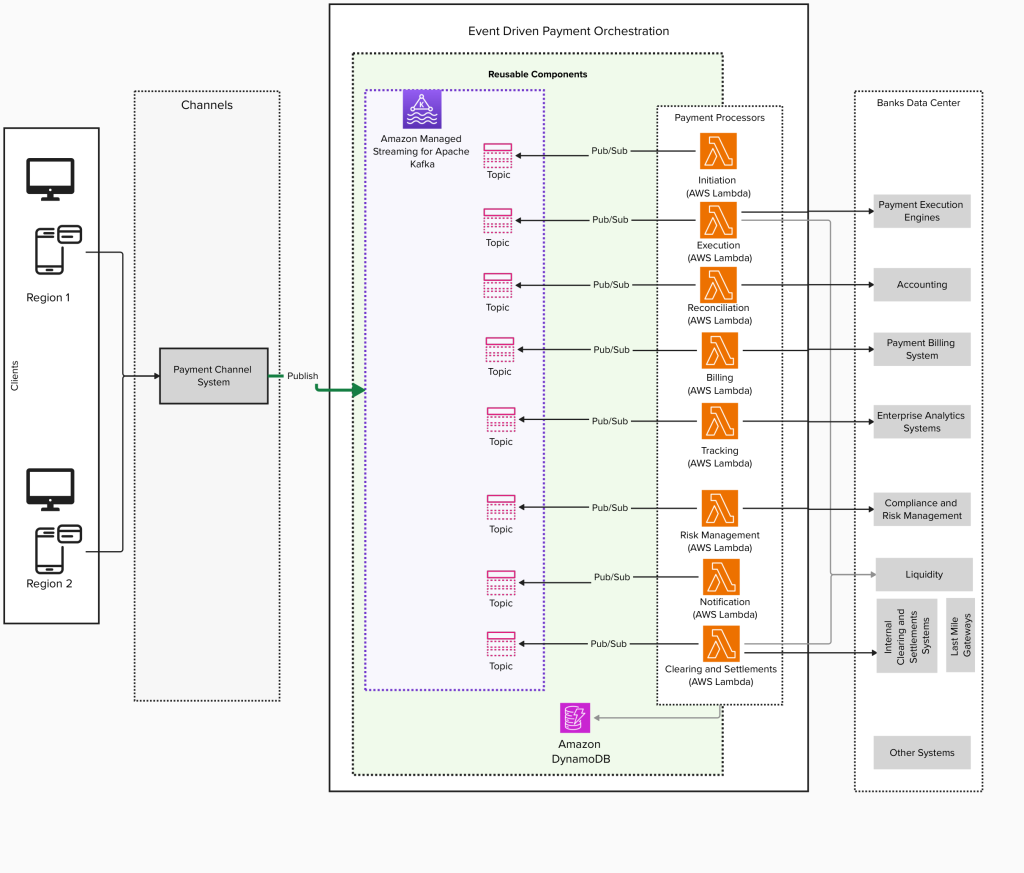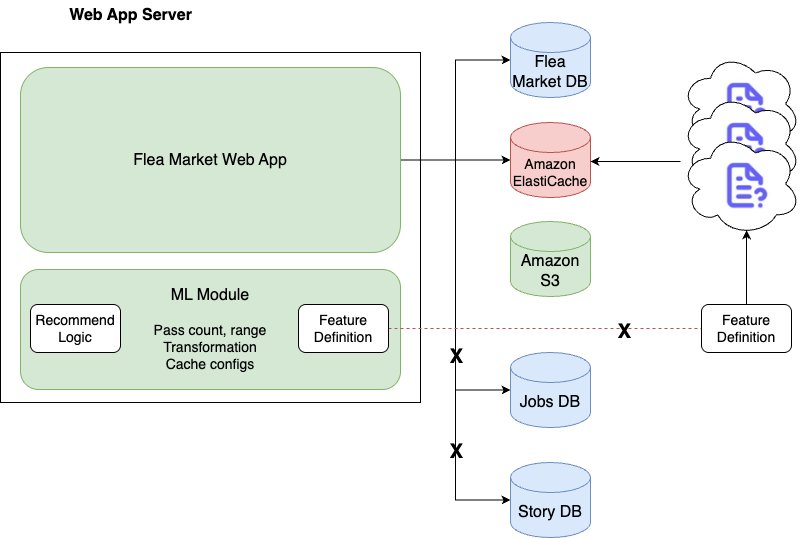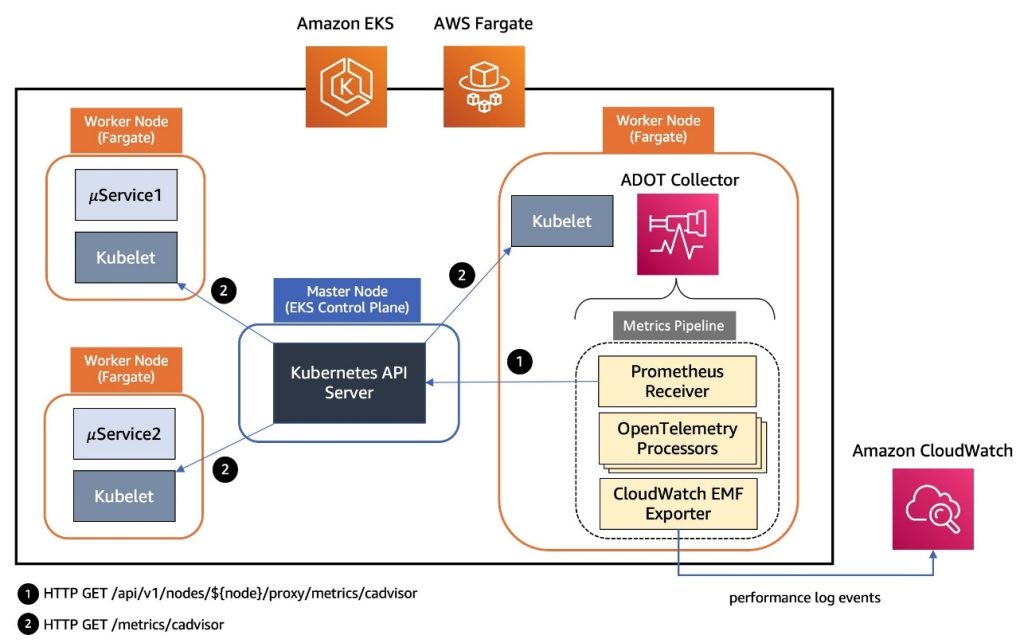AWS Architecture Blog
Category: Amazon Elastic Kubernetes Service
How Salesforce migrated from Cluster Autoscaler to Karpenter across their fleet of 1,000 EKS clusters
This blog post examines how Salesforce, operating one of the world’s largest Kubernetes deployments, successfully migrated from Cluster Autoscaler to Karpenter across their fleet of 1,000 plus Amazon Elastic Kubernetes Service (Amazon EKS) clusters.
Architecting conversational observability for cloud applications
In this post, we walk through building a generative AI–powered troubleshooting assistant for Kubernetes. The goal is to give engineers a faster, self-service way to diagnose and resolve cluster issues, cut down Mean Time to Recovery (MTTR), and reduce the cycles experts spend finding the root cause of issues in complex distributed systems.
BASF Digital Farming builds a STAC-based solution on Amazon EKS
This post was co-written with Frederic Haase and Julian Blau with BASF Digital Farming GmbH. At xarvio – BASF Digital Farming, our mission is to empower farmers around the world with cutting-edge digital agronomic decision-making tools. Central to this mission is our crop optimization platform, xarvio FIELD MANAGER, which delivers actionable insights through a range […]
Modernization of real-time payment orchestration on AWS
The global real-time payments market is experiencing significant growth. According to Fortune Business Insights, the market was valued at USD 24.91 billion in 2024 and is projected to grow to USD 284.49 billion by 2032, with a CAGR of 35.4%. Similarly, Grand View Research reports that the global mobile payment market, valued at USD 88.50 […]
How Karrot built a feature platform on AWS, Part 1: Motivation and feature serving
This two-part series shows how Karrot developed a new feature platform, which consists of three main components: feature serving, a stream ingestion pipeline, and a batch ingestion pipeline. This post starts by presenting our motivation, our requirements, and the solution architecture, focusing on feature serving.
How Zapier runs isolated tasks on AWS Lambda and upgrades functions at scale
In this post, you’ll learn how Zapier has built their serverless architecture focusing on three key aspects: using Lambda functions to build isolated Zaps, operating over a hundred thousand Lambda functions through Zapier’s control plane infrastructure, and enhancing security posture while reducing maintenance efforts by introducing automated function upgrades and cleanup workflows into their platform architecture.
Implement monitoring for Amazon EKS with managed services
In this post, we show you how to implement comprehensive monitoring for Amazon Elastic Kubernetes Service (Amazon EKS) workloads using AWS managed services. This solution demonstrates building an EKS platform that combines flexible compute options with enterprise-grade observability using AWS native services and OpenTelemetry.
Improving platform resilience at Cash App
Cash App, a leading peer-to-peer payments and digital wallet service from Block, Inc., has implemented resilience improvements across the entire technology stack. In this post, we discuss how Cash App improved the resilience of its compute platform built on Amazon Elastic Kubernetes Service (Amazon EKS) by implementing a dual-cluster topology to reduce single points of failure. We also discuss how Cash App used AWS Fault Injection Service (AWS FIS) to conduct an Availability Zone power interruption scenario in non-production environments, preparing the platform team for real-world failures and ongoing
How Nielsen uses serverless concepts on Amazon EKS for big data processing with Spark workloads
In this post, we follow Nielsen’s journey to build a robust and scalable architecture while enjoying linear scaling. We start by examining the initial challenges Nielsen faced and the root causes behind these issues. Then, we explore Nielsen’s solution: running Spark on Amazon Elastic Kubernetes Service (Amazon EKS) while adopting serverless concepts.
Top Architecture Blog Posts of 2024
Well, it’s been another historic year! We’ve watched in awe as the use of real-world generative AI has changed the tech landscape, and while we at the Architecture Blog happily participated, we also made every effort to stay true to our channel’s original scope, and your readership this last year has proven that decision was […]









